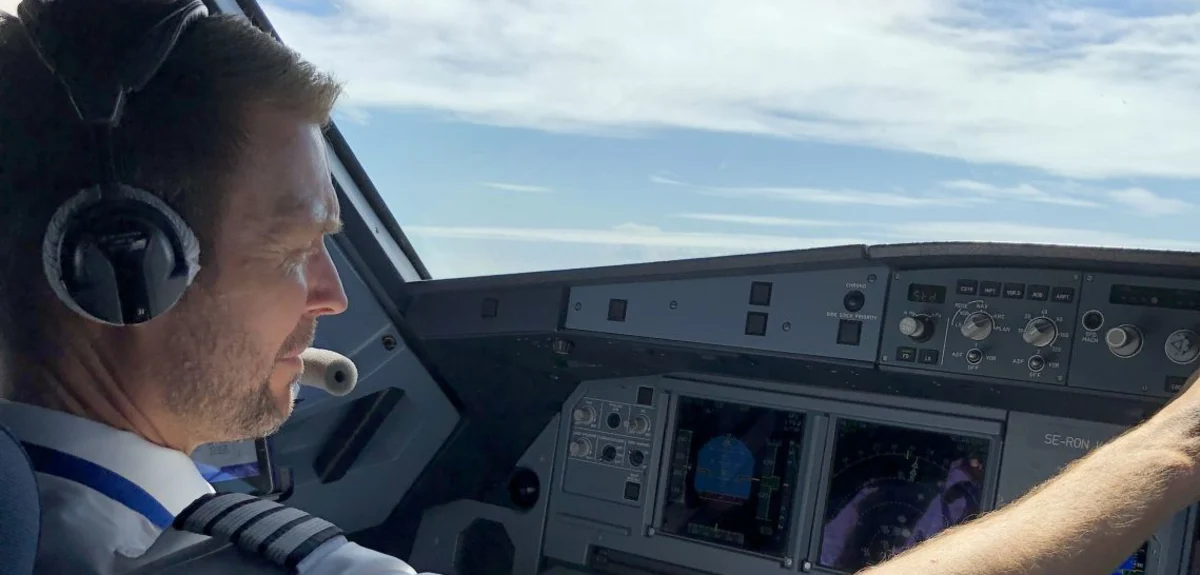
Ask the pilot: Big questions from Little Flyers
SAS pilots answer the children's questions.
How fast does a plane fly?
The Airbus 320, one of the most common passenger aircraft, flies at a speed of around 800 kilometers per hour. That’s almost seven times faster than a car is allowed to legally drive on a motorway. The speed of an aircraft can vary depending if there is a tailwind or headwind. You can go faster with a tailwind and also use less fuel. This is why we pilots try to find the flight altitude where the wind is most favorable, to use as little fuel as possible and also reduce emissions.
How slowly can a plane fly?
A plane flies at its slowest speed just before landing. The speed differs quite a bit depending on how much the plane weighs. The heavier the plane the faster it flies. When landing, we want to fly as slowly as possible to ensure the braking distance is not that long. The plane has to be able to stop completely before you reach the end of the runway. During a normal landing with an Airbus 320 full of passengers, the speed is about 260 km per hour.
Is there a steering wheel in the cockpit?
Many older aircraft are controlled with something called a Yoke. In newer aircraft, such as an Airbus, the pilots have a sidestick instead. It works roughly like a joystick you use to play computer games with. SAS aircraft always have two pilots and they both have a sidestick to enable both pilots to fly the plane. A small tiller is used to steer the plane on the ground, which is only used at low speeds when the plane is taxiing to and from the runway.
What do pilots do when they need to eat or go to the toilet? Who flies the plane then?
There are special rules for when we pilots can eat and go to the toilet. When we eat, we fold out a small table in front of us, it’s a bit like eating at the kitchen table at home. Both pilots can eat at the same time, but we have to wait until we are at our final flying altitude where we are going to remain for a long time, so we don’t have many other tasks to perform. We’re then flying on what’s called autopilot. This means that the plane is being flown automatically, the way we have programmed it to do. When the plane is flying on autopilot, the pilots need to supervise the system and be ready to take over control if the plane is not doing what it is programmed to do or if something unexpected happens. If we need to go to the toilet, naturally this is totally OK, but only one of the pilots can leave the cockpit at a time. The other pilot then takes over all responsibility until both are back in place again. Naturally, the best time to go to the toilet is when we are flying on autopilot.
How many buttons are there in the cockpit?
There are over 400 buttons in the cockpit of an Airbus 320. Most are only there for safety reasons and only used if other systems in the plane aren’t working as they are supposed to. As pilots, we need to know what every button does and know what will happen if we turn them on or off. We also have checklists that help us check that all the buttons are always in the right position.
Are you afraid of flying?
No, we’re never afraid when flying. It’s the safest form of transport there is, much safer than a car, for example. However, everyone who works in an aircraft is always attentive and watchful when flying to ensure all the passengers onboard have a safe and secure flight.
Rasmus Ilsø Olsen
Chief Pilot
Rasmus Ilsø Olsen
Title: Chief Pilot
Years at SAS: 23
Home base: Copenhagen
Flies: Airbus A320
Flight hours: 11,000
Favorite airport: Copenhagen